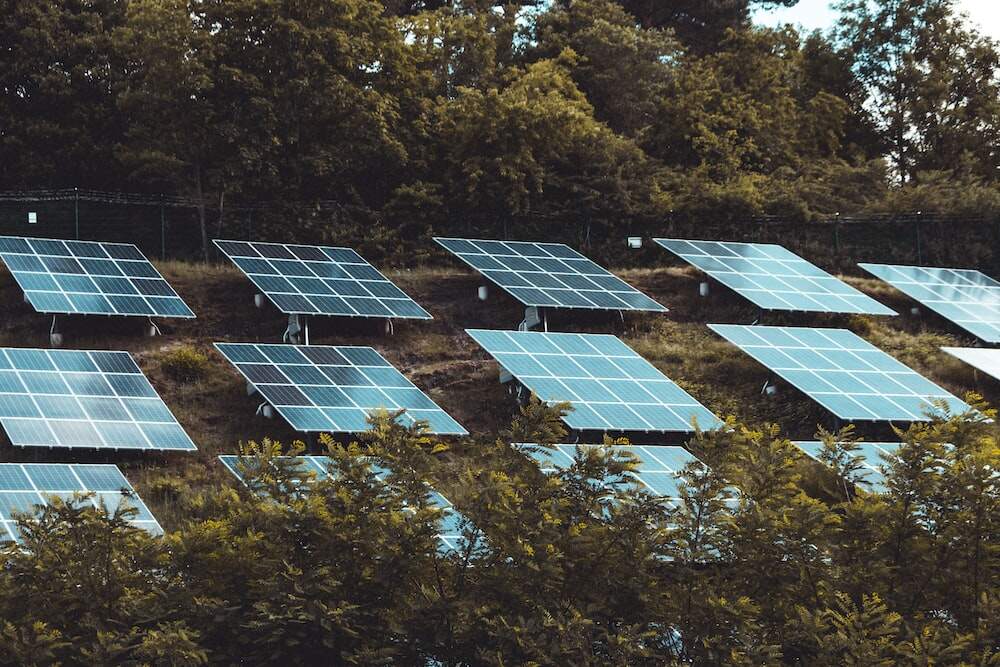
Environmentalists' call for clean energy worldwide has seen an exponential increase in the use of solar energy. At the heart of this renewable energy are solar panels. These are the electricity generators that use solar energy from the sun.
If you want to install solar panels, you should understand the various types in the market. Solar panels are classified into 3 different types depending on their structure and appearance. They are monocrystalline, polycrystalline, and thin-film solar panels.
Read on to find out the distinguishing features of different solar panel types. We will get into details of each, covering the design, appearance, performance, and cost. Let's dive right in!
Before we get into the main content of this post, let's first recap what solar panels are and how they generate electricity. Solar panels are a complex structure consisting of solar cells, the functional unit of every solar panel. A typical solar panel can have 60, 72, or 90 individual solar cells.
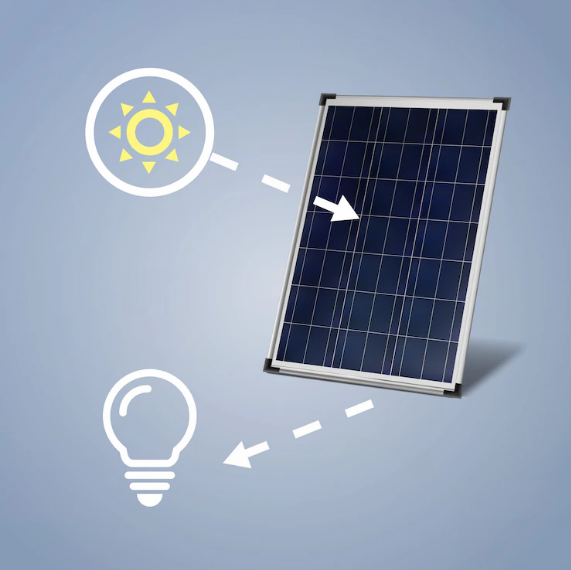
Working Principle of Solar Panels
A solar cell comprises a silicon layer sandwiched between boron and phosphorus layers. The boron and phosphorus provide positive and negative charges, respectively. And the silicon wafer semiconductor separating the two. When the sun's photon strikes the solar cell, electrons (negative charges) gain energy and start to move. That generates the electric field, giving rise to a directional current.
Individual solar cells are interconnected in a series and parallel electrical network to harness the directional current generated. The direct current (DC) can then be stored in batteries or converted to AC for immediate use.
Solar panels generate electricity due to the photovoltaic effect, which is why they are also known as photovoltaic (PV) panels.
Monocrystalline, polycrystalline, and thin film are the 3 types of solar panels. These vary in structure, performance, appearance, efficiency, and cost. Let's compare them based on these factors.
Monocrystalline solar panels, also known as single-crystal solar panels, are the most superior of the three types of solar panels. They are made from a single pure silicon crystal cut from many wafers. Pure silicon is black, which is why monocrystalline solar panels have a dark appearance.
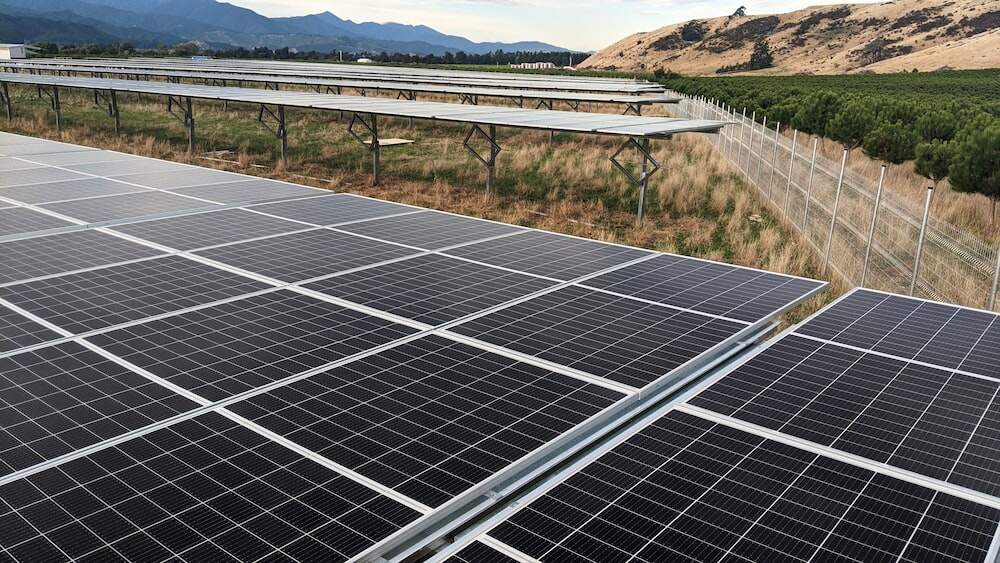
Monocrystalline Solar Panels
You can quickly identify monocrystalline solar panels from their black or dark appearance. They also last longer and have the best performance.
Solar manufacturers use the Czochralski method to make monocrystalline solar cells. It involves putting seed silicon crystals into a molten vat of pure silicon at high temperatures. The crystals turn into an ingot, which is then cut into thin wafers. The wafers form the semiconductor layer between the positively charged boron layer and the negatively charged phosphorous layer.
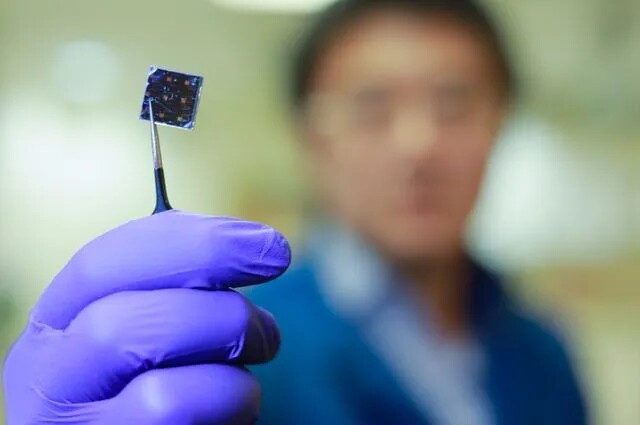
Monocrystalline Solar Cells Manufacturing
Technology is rapidly advancing, leading to different methods of making solar panels more efficient. As a result, monocrystalline panels have two new variations in the market.
Passivated Emitter and Rear Contact (PERC) cells: monocrystalline solar panels manufactured through a different process that enhances their efficiency and performance.
Bifacial solar panels: a monocrystalline solar panel that generates electricity on all sides. Such solar panels are most common in commercial ground-mounted applications.
Monocrystalline solar panels have higher efficiency than polycrystalline and thin film solar panels. They are about 17-22% efficient, though the new technology in manufacturing pushes these figures higher.
What makes monocrystalline panels the most efficient? They are made from single silicon crystals, which are also free from purity. As a result, electrons are freer to flow throughout the cell structure. These types of solar panels also have a higher power rating per size. Monocrystal solar panels are the best choice if you have less space at home.
The cost of solar panels varies from brand to brand and from region to region. Some countries even subsidize these products to make them affordable to taxpayers and encourage renewable energy use. As a result, we will not quote the price but compare monocrystalline panels with other types.
Monocrystalline solar panels are the most expensive of the three. That's because of the manufacturing process that uses pure silicon crystals, high efficiency, and durability. It will cost you more to buy these panels than thin-film or polycrystalline panels. But if you want quality, they are the best choice.
Polycrystalline is the second type of solar panel with the highest popularity. That is because they give a better trade-off between cost and efficiency. Monocrystalline and polycrystalline solar panels are the most common. Still, the two have differences in structure, appearance, and performance.
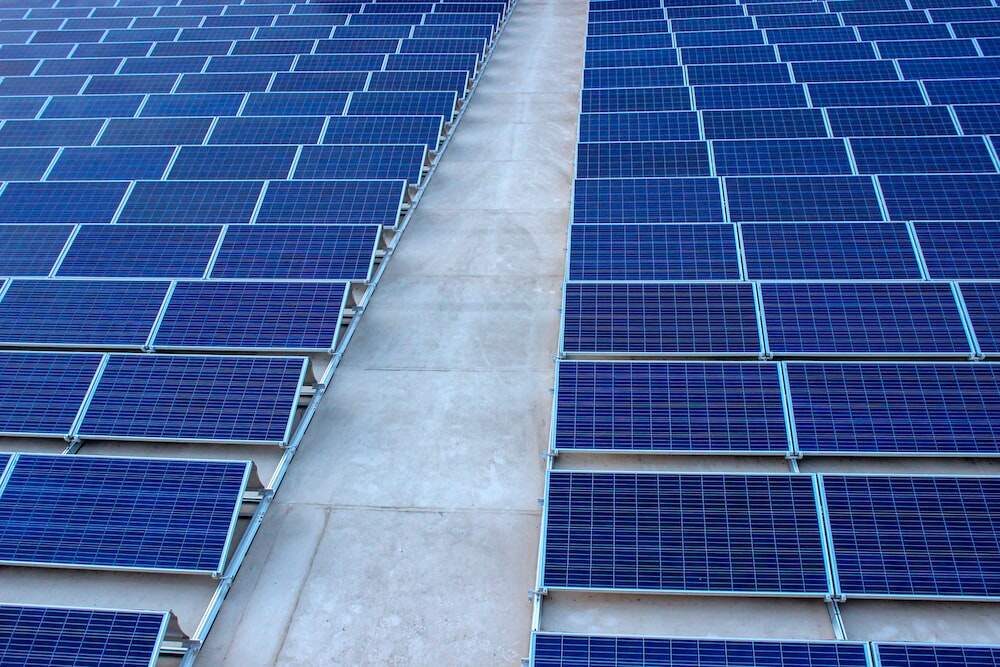
Polycrystalline Solar Panels
You can identify polycrystalline solar panels on the roof by their blue hues. They get their bluish appearance during the manufacturing process. The appearance and consistency of polycrystalline panels vary significantly from one solar panel to another. Hence, they are not the most appealing to the eye.
Polycrystalline solar panels are made from silicon solar cells, but the steps differ. The cooling process differs, which creates multiple crystal layers instead of single crystals. The silicon purity is also lower than the standard of monocrystalline solar cells.
Polycrystalline panels are less efficient than monocrystalline panels. But they are better than thin film panels. They are typically rated 15%- 17% efficient. The reduced efficiency is due to the multiple solar silicon cells in its structure that hinder the flow of electrons.
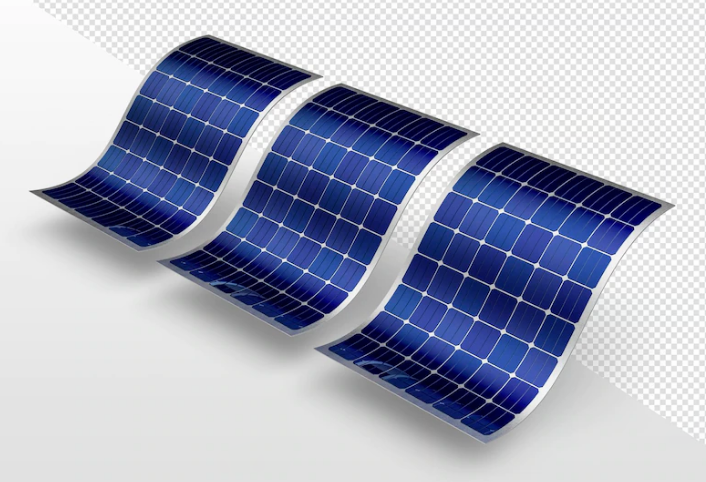
The lower efficiency of these panels also affects their overall power output. They will not generate the best electric power per unit size. Their performance further deteriorates at high temperatures. And due to lower power output, polycrystalline solar panels require more installation space.
Polycrystalline panels are more affordable than monocrystalline panels. They are not made from pure silicon crystals like the former. Their affordability makes them the most popular of all types of solar panels, found almost everywhere.
If you are on a tight budget but have enough space, Polycrystalline panels are the best choice. However, they also have lower power capacity. That means you will buy many of them compared to if you chose monocrystalline panels instead.
Thin film solar panel is the last type of solar panel you can find in the market. These are the best options if you have a tight budget.
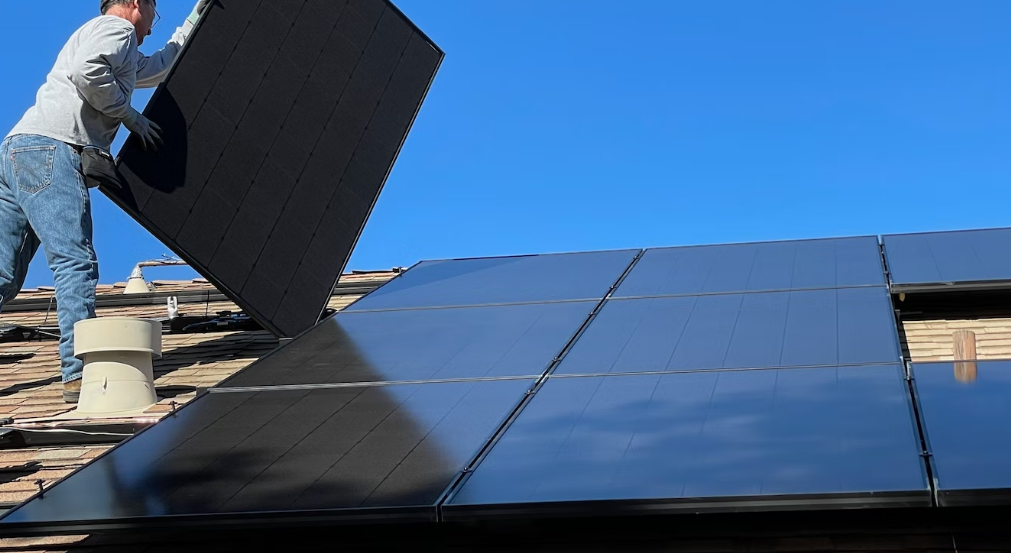
Thin Film Solar Panels
Thin film solar panels are the most appealing and black in appearance. They are flat and flexible, which allows them to blend with rooftops and other surfaces where they are installed. This type of solar panel is ideal for smaller solar projects and smaller commercial buildings. Choose a thin film solar panel over other solar panel types for small solar applications. These can be powering your boat, warehouse, or light uses.
Thin film solar cells are made from amorphous silicon instead of silicon crystals. That's why they are also known as amorphous solar panels. The materials used in the manufacturing process include the following:
Cadmium telluride (CdTe) is used in manufacturing thin-film panels. It offers the same advantage as polycrystalline solar cells. This compound also has the lowest carbon footprint and water requirement of all types of solar panels. It is also low-cost.
This compound is named so because it does not have a definite shape. Unlike mono and polycrystalline solar cells, the structure of amorphous silicon is not up to the molecular level.
The advantage of amorphous silicon in making thin film panels is that less material is required. Only a fraction is used in the manufacturing process of typical solar cells for other types of solar panels. And that can explain why they are the most affordable and have the least power conversion efficiency.
Copper indium gallium selenide type of thin film solar panel uses a thin layer of copper, gallium, indium, and selenium. These are deposited on a glass or plastic backing. The four elements result in a more efficient thin film solar panel than one made from amorphous silicon or cadmium telluride.
As mentioned, thin film panels are the least efficient of all three solar panel types. They are about 2-3% less efficient than monocrystalline and polycrystalline panels. However, their performance depends on the material used, and here is the breakdown:
Thin film panels are the most affordable of all types of solar panels. That is because they require less material to make compared to other options. But they don't have the same efficiency and power capacity as monocrystalline and polycrystalline solar panels. They are a pocket-friendly option and ideal for smaller solar projects.
Monocrystalline, polycrystalline, and thin film panels have pros and cons. That makes them suited for various applications, and you have other factors to consider when in the market for PV panels.
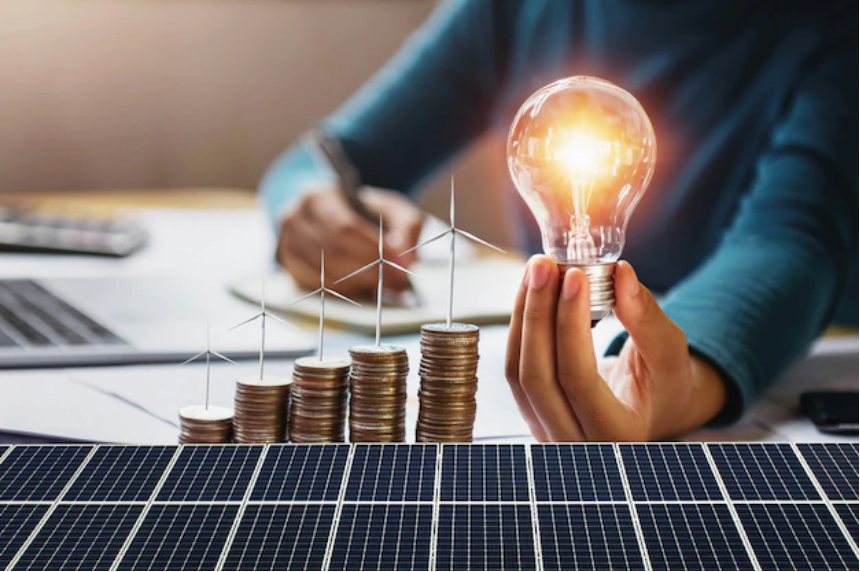
Consider the following factors before you conclude any purchase:
Do you have enough space on the roof or ground where you will install the solar panels? This is fine if you want just a few pieces for domestic use. But space availability becomes a significant factor if you are buying photovoltaic panels for commercial purposes.
Consider monocrystalline PV panels before the thin film and polycrystalline ones if you have limited space. They have high power capacity per unit size and high efficiency. But if your property is spacey, you can save on the upfront cost of your solar panels by choosing monocrystalline PV panels.
What do you want to use your solar panels for? If you have a large solar project, consider polycrystalline panels. These are more affordable and relatively efficient in energy conversion. Their energy capacity is also high enough for large solar projects. But you better have enough space for the panels to capture maximum sunlight. Otherwise, consider monocrystalline photovoltaic panels.
Thin film panels are only good if you have small solar projects. You can use them for powering your boat, warehouse, and other less energy-intensive applications.
Solar panel power conversion efficiency reduces with an increase in ambient temperature. Monocrystalline and polycrystalline panels have a temperature coefficient of -0.3% / °C to -0.5% / °C. On the other hand, a thin film panel has a lower temperature coefficient of about -0.2% / °C. It is the best choice if you live in high temperatures and sunny conditions.
The temperature coefficient of a photovoltaic panel is defined as the decrease in output power for every 1°C temperature rise over 25°C (77°F). That means it is not a significant factor if your area maintains a temperature of 25°C (77°F) throughout the year.
Solar panels are designed to endure harsh weather conditions outdoors. Hailstorms can potentially damage them, so we have to include a hail rating as a factor. Different types of solar panels have varying hail ratings. Manufacturers often include the value on the nameplate. But even if they don’t, you should know what can withstand such conditions.
If you live in a place prone to hailstorms, a crystalline solar panel can be the best choice over a thin film panel. The former has a thicker construction to withstand impacts from hail storms hitting at a speed of up to 50mph.
Most solar panel projects are long-term investments. That is why you should know solar panel types that last longer. Monocrystalline panels are the most durable, with a lifespan of about 25 years. Polycrystalline panels are the second, and thin film panels come last.
Monocrystalline is a relatively affordable option if you consider longevity. The solar cells of these panels are more resistant to degradation.
You may have enough space on your roof to accommodate polycrystalline panels. These seem the best cost-effective option until you check the weight-carrying capacity of your roof. If the roof structure cannot support the weight of crystalline solar panels, thin film panels are the best option. They are much lighter and more affordable and also reduce the upfront cost of your solar project.
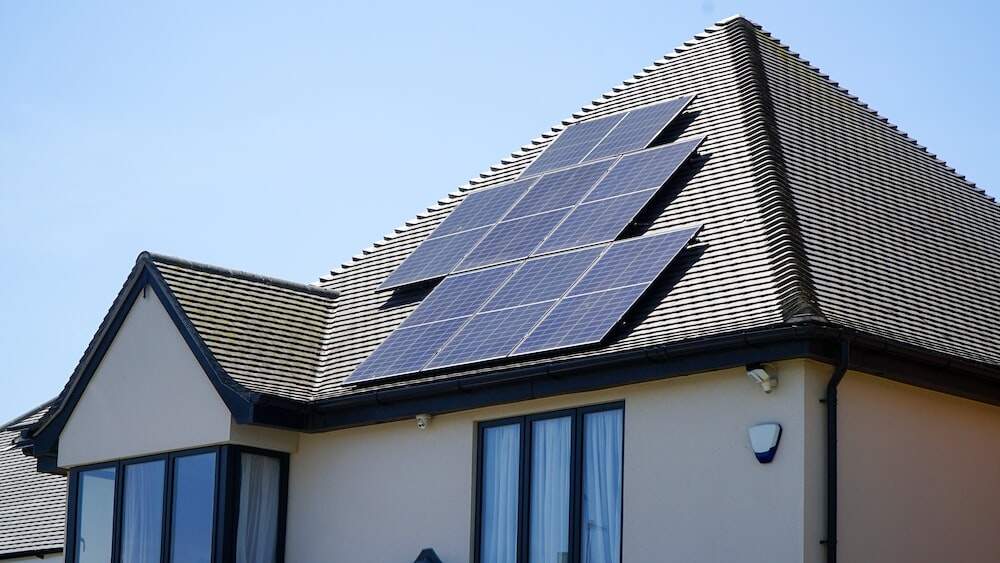
Consider the rooftop load-bearing capacity as the next factor when choosing the type of solar panels to install.
Choose the solar panel type for your application and reduce your carbon footprint. Solar panels are the most viable source of renewable energy available. Install these in your home or commercial property to generate clean electricity using the sun. Additionally, some countries offer incentives and other tax advantages for those who use solar panels.
Source your solar panels from a reputable supplier and find the best technician to help you install them. If you are looking for the first-class China solar lighting system, please feel free to contact us at [email protected]. We will provide you with the most professional solar lighting solutions no matter for home or commercial applications!